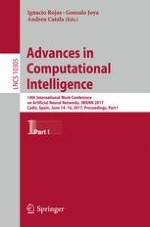2017 | OriginalPaper | Buchkapitel
A Systematic Approach for the Application of Restricted Boltzmann Machines in Network Intrusion Detection
verfasst von : Arnaldo Gouveia, Miguel Correia
Erschienen in: Advances in Computational Intelligence
Aktivieren Sie unsere intelligente Suche, um passende Fachinhalte oder Patente zu finden.
Wählen Sie Textabschnitte aus um mit Künstlicher Intelligenz passenden Patente zu finden. powered by
Markieren Sie Textabschnitte, um KI-gestützt weitere passende Inhalte zu finden. powered by
